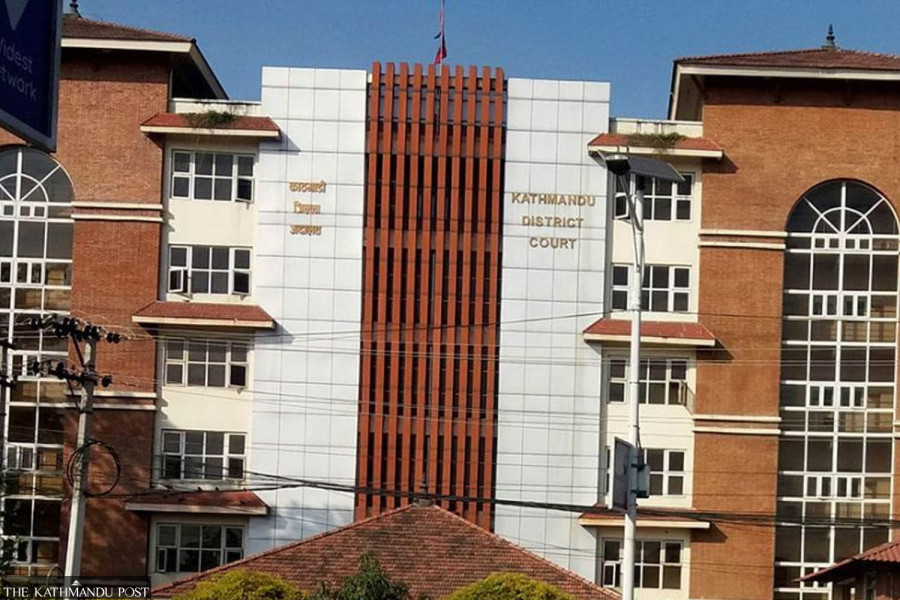National
Idea behind family bench in courts
Two dedicated benches at Kathmandu district court hear civil cases related to women, fast-track justice delivery.
Binod Ghimire
After a long preparation, separate benches started at the Kathmandu District Court on October 5 to hear family cases. Addressing the event marking the commencement of the dedicated benches, Chief Justice Bishowambhar Prasad Shrestha announced to extend such benches in two other district courts of the Kathmandu valley.
In the past week, two dedicated benches at the district court heard only civil cases related to women. This has helped fast-track the clearance of such cases.
Here is all you need to know about the family benches and how they function.
What is a family bench?
Several countries have separate family courts to hear civil cases with women as plaintiffs. Such courts mainly deal with issues of property disputes, divorce or domestic violence, among others. In Nepal, instead of instituting entirely new courts, the Supreme Court decided to set up separate benches at district courts. Such dedicated benches deal only with cases related to women.
Thousands of cases, some as old as a decade, are pending in the three tiers of courts. Having separate benches ensures faster justice delivery.
What led to the constitution of such benches?
In his parliamentary hearing before being appointed the chief justice, Shrestha in August had pledged dedicated courts or benches to hear cases with women and children as plaintiffs. The need for such a court or bench, however, was felt long back. The Supreme Court itself has made a ruling to this effect and even did homework in the past. On February 23, 2010, the court passed a verdict directing the government to establish fast-track courts that handle cases involving women and children.
However, nothing happened for years. In 2014, the Supreme Court itself took an initiative to set up the court for the timely delivery of justice to women and children. The apex court’s strategic plan formulated the same year also included the idea of having dedicated benches, if not courts. It also formed a four-member team to study the scope, function and authority of such courts.
Composed of then Appellate Court judge Til Prasad Shrestha and Judge Tek Narayan Kunwar and joint registrars at the Supreme Court Bipul Neupane and Nahakul Subedi, the committee had suggested the formation of separate courts or dedicated benches. It took a decade for their suggestion to be implemented.
How will this help in justice delivery?
There is a practice of constituting dedicated courts or benches aimed at cases of a particular nature, like family courts, consumer courts and children’s courts. Though some district courts in Nepal have dedicated benches to hear cases related to children, there are no other benches. Despite the top court’s rulings and advocacy by rights groups, the government has yet to form consumer courts.
Against this backdrop, the start of the family benches is a welcome move, say human rights defenders.
The Kathmandu District Court has registered 30,000 cases—around 1,000 related to women and children, which come under the jurisdiction of the family benches.
Without the family benches, the court would take years to clear the 1,000 cases, besides the other 29,000 in the backlog. Around two dozen cases are being put on the daily cause list of family benches. “The two family benches are hearing cases related to separations, child custody, alimony and visitation on a daily basis. This has helped timely justice delivery in such cases,” said Ramu Sharma, registrar at the district court.
Will these benches be extended?
If the chief justice’s claim is anything to go by, similar benches will be set up in Lalitpur and Bhaktapur district courts. These courts have the highest caseload.
Can rulings from dedicated benches be appealed?
Yes, they can be appealed to the higher courts, as in other cases. One dissatisfied with such benches can appeal to the high court. And if they still remain unsatisfied, they can challenge it at the Supreme Court. However, there are no family benches at the high courts and the top court.
What is the practice in India?
India has a long history of family courts. After lobbying from different quarters, the Indian parliament promulgated the Family Court Act 1984. The Act was meant to provide for the establishment of family courts with a view to promoting counselling and securing speedy settlement of disputes relating to marriage and family affairs and matters connected therewith.
The law requires India’s state governments to set up a family court for every city or a town whose population exceeds one million. In other areas of the states, the family courts may be set up if the state governments deem them necessary.
As per the records at the Department of Justice of India, there are a total of 785 functional family courts across the country as of July 2023.




 17.13°C Kathmandu
17.13°C Kathmandu














